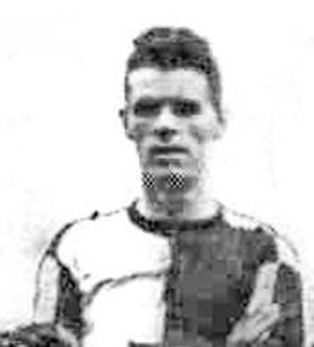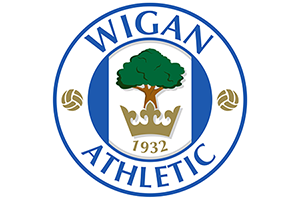Harry Callachan - Player Profile

| Full Name: | Henry Callachan |
| Born: | 09/04/1903 |
| Died: | 11/02/1990 (age 86) |
| Place of Birth: | Madras, India |
| Nationality: | Scotland |
| Position: | Defence |
| First Team Debut: | 27/08/1932 v Port Vale Reserves (H) - Cheshire County League |
| Signed: | 20/08/1932 (Free) |
| Left: | 31/05/1933 (Free) |
Harry “Harry” Callachan, born Henry Callachan on 9 April 1903, was a Scottish footballer who played as a full-back during the 1920s and 1930s. Despite an unorthodox birthplace in Madras, British India, where his Scottish father was serving in the military, Callachan grew up in Scotland and went on to carve out a journeyman career across several clubs. He featured in both the Scottish Football League (most notably with Celtic) and the English Football League (with Leicester City), and later played for a string of non-league clubs in England. Over a career spanning the 1920s and early 1930s, Callachan earned a reputation as a dependable defender and was part of Celtic’s championship-winning squad in 1926. He also holds the distinction of being Wigan Athletic’s first overseas-born signing, owing to his Indian birthplace.
Early Life and Junior Football (1903–1925)
Birth and Background: Henry “Harry” Callachan was born on 9 April 1903 in Madras, India. He was the son of a Scottish soldier stationed there, an unusual origin for a footballer of that era. This early connection to India later made him a trivia figure as one of the few Scotland-raised players born in the subcontinent. Callachan was, however, raised in Scotland and was of Scottish nationality. By his late teens, he was playing in Scotland’s junior football circuit, honing his skills in local clubs.
Kirkintilloch Rob Roy: Callachan’s football journey began with Kirkintilloch Rob Roy, a well-known junior club based near Glasgow. He was involved with Rob Roy around 1921–22, getting his first taste of competitive football at the junior level. Rob Roy (founded in 1878) has a history of developing talent for senior clubs, and Callachan’s stint there put him on the radar of bigger teams.
Parkhead Juniors: Before joining Celtic, Callachan also spent time with Parkhead F.C., another Glasgow junior club. He played for Parkhead during the 1924–25 season (some sources indicate involvement as early as 1922–23). At Parkhead Juniors, he continued to develop as a promising full-back. His experiences in these junior teams – noted for tough competition and passionate local followings – helped shape his defensive abilities. By mid-1925, Callachan’s steady performances in junior football (with Rob Roy and Parkhead) led to interest from major clubs. At the age of 22, he earned a significant move to Celtic, one of Scotland’s top professional clubs, marking the end of his junior football chapter and the start of his senior career.
Celtic (1925–1927)
Signing and Role: At Celtic, he joined a squad managed by Willie Maley during a successful period. Callachan was intended as cover for established Celtic defender Willie McStay, and initially he found himself behind star full-backs like McStay, Hugh Hilley, and later Peter McGonagle in the pecking order. A contemporary description lauded Callachan as “a very stylish full-back… plays as McNair played – the ball comes to him more often than he goes to it… he knows the art of taking up position… McNair’s successor”. This comparison to Celtic legend Alec McNair illustrates the high hopes for Callachan’s defensive style and positional sense.
Debut and 1925–26 Title: Callachan made his first-team debut on 31 October 1925 in a league match against Dundee, which ended 0–0. This debut came in the 1925–26 Scottish First Division season, during which Celtic were locked in a title race. Although used sparingly at first, Callachan was given a run of games toward the end of that season. He proved up to the task – Celtic did not lose any of the league matches he played in that campaign. His contributions, primarily in the run-in, helped Celtic clinch the 1925–26 Scottish League Championship. It was a notable achievement early in his career: Callachan earned a league winner’s medal as Celtic finished top of the table in 1926
1926–27 Season: The following season, 1926–27, saw Callachan again mostly on the fringes of the first team. He made only a handful of league appearances, typically later in the season. Celtic’s defense was going through changes and some struggle – in the five league games Callachan played that season, the club conceded 8 goals (though this was “not necessarily his fault,” as one account notes). Notably, Celtic lost only one of the matches in which he featured that year, showing that he generally performed reliably when called upon. Celtic ultimately lost the league title in 1926–27, finishing third behind Rangers and Motherwell. They did, however, win the 1927 Scottish Cup, a triumph in which Callachan unfortunately had no direct involvement – he did not play in the cup ties, so he missed out on the cup final victory that season.
By now it was evident that while Callachan was a capable defender, he was unable to displace Celtic’s first-choice full-backs for a regular starting spot. Over two seasons at Celtic Park, he made 11 Scottish League appearances (scoring 0 goals) for the Hoops. He never earned an international cap for Scotland (understandable given his limited club role). Celtic recognised his service as part of a championship squad, but with competition heavy and his opportunities limited, the club agreed to let him move on.
Loan Spells and Exit: During his Celtic tenure, Callachan had brief spells away on loan to gain more playing time. In mid-1927 he spent a short period with Alloa Athletic (then a Scottish Division Two side). He turned out for Alloa between July and September 1927. Following that, later in 1927 he also had a stint with Beith Juniors, a Scottish junior club, from October to December. These temporary moves were aimed at keeping him match-fit. Ultimately, in September 1927, Celtic transferred Callachan to Leicester City of England, ending his time in Glasgow. His move on 24 September 1927 to Leicester City brought him into English league football for the first time.
Leicester City (1927–1928)
Callachan’s transfer to Leicester City in late 1927 gave him a chance to test himself in the English game. Leicester City were playing in the First Division of the English Football League (the top tier in England) at that time. The move south was a significant step – he went from a limited role at Celtic to a club in one of the world’s most competitive leagues.
Settling at Filbert Street: Arriving in the autumn of 1927, Callachan joined a talented Leicester squad. For context, Leicester City would finish the 1927–28 season in a respectable mid-table position, and the following year they even challenged for the title (finishing as runners-up in 1928–29). At Leicester, Callachan found competition for the full-back slots as well. He managed to make 3 appearances in the English First Division for the Foxes during the 1927–28 season. These appearances came in early 1928 (records show he featured in three league matches and recorded no goals). While he was not a regular starter, each appearance in England’s top flight was valuable experience.
Leicester’s defense at the time included established players like Adam Black and Reg Osborne, meaning Callachan was chiefly a squad player. He did not manage to secure a long-term place in Leicester’s team.
Departure: By the end of the 1927–28 season, Callachan’s stint at Leicester City was over. With just three first-team appearances, “things didn’t work out” for him at Filbert Street. Leicester released or transferred him in 1928, and Callachan moved on to the next chapter of his peripatetic career. He would continue playing in England, but outside the Football League.
(Even though his time with Leicester was short-lived, it is notable that Callachan had played in both the Scottish and English top divisions – a relatively rare accomplishment for players of that era. Leicester City in the late 1920s was a strong side, and the fact that Callachan was part of their squad, if only briefly, speaks to his capabilities.)
Tunbridge Wells Rangers (1928–1930)
After leaving Leicester, Harry Callachan shifted into English non-league football. His next stop was Tunbridge Wells Rangers, a club based in Kent. Tunbridge Wells Rangers competed in the Southern League or similar regional competitions during the late 1920s. Callachan joined them in 1928, likely seeking regular playing time outside the limelight of the Football League.
Playing in Kent: Callachan spent the 1928–29 and 1929–30 seasons with Tunbridge Wells Rangers. As a seasoned player coming from top-flight clubs, he would have been a valuable addition to the Tunbridge Wells side. The Southern League (and other regional leagues) at the time included a mix of semi-professional and amateur clubs, and Tunbridge Wells Rangers were an ambitious outfit. Unfortunately, detailed statistics from those seasons are scarce; however, his presence is documented for the 1928–29 season, and he is believed to have remained through 1929–30. Playing in defense, Callachan would have brought experience and stability to the team’s back line.
Notable Connections: An interesting footnote of Callachan’s time in Tunbridge Wells is his connection to Charlie Spencer. Spencer, a former England international defender, became player-coach of Tunbridge Wells Rangers in 1929. This means Callachan was likely coached by (or played alongside) Charlie Spencer in the 1929–30 season. Spencer’s tenure at the Kent club was short – he left to become the first manager of Wigan Athletic in 1932. This connection would soon prove significant for Callachan. It’s very plausible that Spencer’s presence at Tunbridge Wells and familiarity with Callachan helped pave the way for Callachan’s subsequent move to Wigan Athletic a couple of years later. In April 1933, when Wigan later played a friendly against Tunbridge Wells, local reports noted it as a “happy return” for manager Spencer to his old club, underscoring the link between Tunbridge Wells and Wigan’s early days.
End of Tunbridge Wells stint: By mid-1930, Callachan was on the move again. Tunbridge Wells Rangers provided him with regular football for two seasons, but he next sought a club closer to his roots in the Midlands. His performances in Kent kept his career going, demonstrating his adaptability to different levels of competition. In 1930, he signed with Burton Town, marking another move geographically and competitively.
Burton Town (1930–1932)
In 1930, Callachan joined Burton Town F.C., an English club based in Burton upon Trent, Staffordshire. Burton Town was a strong semi-professional side competing in the regional leagues. At that time, Burton Town played in the Birmingham & District League, one of the country’s more competitive semi-pro leagues, and later the Midland Football League. The club had even won the Birmingham League title in 1927–28, underscoring the quality of competition when Callachan arrived a couple of years later.
Playing in the Midlands: Callachan spent the 1930–31 and 1931–32 seasons with Burton Town. At Burton, he was once again a regular in defense. The Birmingham & District League featured clubs that were either former Football League teams or aspiring ones, so Callachan was competing at a high non-league standard. Burton Town’s schedule would have included league fixtures across the Midlands and FA Cup qualifying rounds.
While specific match details from his Burton Town period are limited, being part of the squad in 1931–32 is confirmed. By then, Callachan was around 28–29 years old, presumably one of the more experienced heads in the team. His professional background (Celtic and Leicester City) likely made him a leader in Burton’s defense. These seasons in Burton would have kept Callachan in the eye of clubs looking to add seasoned players, especially new clubs forming or aiming to climb the football pyramid.
Transition to Wigan: In 1932, another opportunity arose. The formation of a new club, Wigan Athletic, drew upon experienced players from around the country. Thanks perhaps to his old acquaintance Charlie Spencer (who had taken the managerial job at Wigan) and his solid form at Burton, Callachan was recruited by Wigan Athletic in the summer of 1932. He left Burton Town after the 1931–32 season, ready to embark on a final notable chapter of his playing days.
Wigan Athletic (1932–1933)
Harry Callachan’s move to Wigan Athletic in 1932 would be a defining one in the latter stage of his career. Wigan Athletic was a brand-new club, founded in 1932 after the collapse of Wigan Borough. The club joined the Cheshire County League for their inaugural season 1932–33. Callachan’s experience was exactly what the fledgling club needed, and he became a significant member of Wigan’s first ever team.
Signing and Debut: Callachan signed for Wigan Athletic on 20 August 1932 as a free agent. Given his birthplace, Wigan fans can note that he was technically the club’s first “overseas” signing, since no previous Wigan Borough player had been born outside the British Isles – Callachan’s Indian birth set him apart. He made his Wigan debut just a week after signing, on 27 August 1932, in a home match against Port Vale Reserves in the Cheshire League. This match was Wigan Athletic’s first competitive fixture at Springfield Park in the Cheshire League, marking Callachan’s place in Wigan history as a starter in their maiden game.
Ever-Present Defender: Throughout the 1932–33 season, Callachan was a mainstay in Wigan Athletic’s defense. He appeared in 40 matches for Wigan that season. These were primarily league appearances in the Cheshire County League. He played as a full-back, likely anchoring the defense with reliability and veteran savvy.
Callachan’s contributions helped Wigan Athletic stabilise quickly in their first season. His presence would have been invaluable in organizing the back line of a newborn team. Under manager Charlie Spencer (his former Tunbridge Wells mentor), Wigan Athletic finished their inaugural season respectably in mid-table. Callachan’s role was crucial enough that the club’s history book and archives highlight him. It is also worth noting that by playing for Wigan, Harry Callachan became one of the few players of his generation to have played in Scotland’s top division, England’s top division, and the English non-league system.
After Wigan’s first season concluded in May 1933, Callachan, now 30 years old, parted ways with the club on 31 May 1933 when his short-term contract ended. He had served Wigan Athletic exceedingly well in their formative year, essentially ending his professional career on a high note of being an ever-present figure for a new club.
Market Harborough Town and Retirement (1933)
Following his season at Wigan, Callachan moved south again and had a brief stint with Market Harborough Town in 1933. Market Harborough Town was a local club in Leicestershire (the town of Market Harborough lies not far from Leicester, where Callachan had played years earlier). By this time, Callachan was likely winding down his playing days. He joined Market Harborough Town at the end of 1932–33, presumably to continue playing at a semi-professional or amateur level.
Local Football: Market Harborough Town competed in regional leagues and cup competitions. While details of Callachan’s appearances there are scant, his inclusion on the club’s roster is noted in summaries of his career. Given his experience, he would have been a big name for a small town club. It’s possible he played in local league matches and FA Cup qualifiers for them in 1933. This move likely also indicates he settled in the Midlands after leaving Wigan, or he had an opportunity via contacts in Leicestershire to play part-time.
Retirement: By the mid-1930s, Harry Callachan retired from competitive football. His last known club is Market Harborough Town, and after 1933 there are no records of him continuing in senior football. He would have been about 30 years old at retirement, which was a typical age to hang up one’s boots in that era if not continuing at the top level. There is no evidence that Callachan moved into coaching or management after playing – it appears he stepped away from the football spotlight entirely following his swansong in local football.
It’s likely that Callachan took up other work after football (as many players of his time did not have hefty earnings to retire on). Unfortunately, details of his occupation or personal life post-football are not documented in readily available sources. What is clear is that he lived a long life after his football career ended, quietly away from the public eye.
Later Life and Legacy
Harry Callachan lived for many decades after his football career. He passed away on 11 February 1990, at the age of 86.
Legacy in Football History: While Callachan was never a superstar, his story is a rich tapestry of the footballing landscape of his era. He was very much a journeyman footballer, one who experienced the game at almost every tier: from junior football in Scotland, to a top club (Celtic) where he won the league, to England’s top division (Leicester City), and then through the depth of non-league football in both the south and midlands of England, culminating in being part of a new club’s very first steps (Wigan Athletic).
His achievements include being part of Celtic’s 1925–26 Scottish League championship team, a highlight that places him in the club’s honour roll for that season. He also was indirectly associated with Celtic’s 1927 Scottish Cup victory (though he did not play in the campaign). In England, his three First Division appearances with Leicester City in 1928 mean he can be counted among the players who have played at the highest level in both Scotland and England. With Wigan Athletic, Callachan’s legacy is particularly cherished – as noted, he can claim the title of Wigan’s first ever overseas-born player, and he was a key figure in their inaugural season, appearing in every match. Wigan Athletic historians and fans looking back at 1932–33 remember him as one of the foundational players of the club.
Additionally, Callachan’s journey reflects the mobility of players even in early 20th-century football. He contributed to clubs across Britain, bringing professionalism and expertise to smaller sides. For example, at Tunbridge Wells Rangers he helped strengthen a regional team, and at Burton Town he bolstered a squad in one of England’s strongest semi-pro leagues. His path crossed with interesting figures like Charlie Spencer, linking stories between clubs (from Tunbridge Wells to Wigan) in a way that highlights how interconnected the football world was, even then.
Personal Life: Little is recorded about Callachan’s personal life outside football. Given his birth in India, one might wonder if he had any recollections or special status due to that – but by all accounts, he was considered a Scotsman through and through. His long life suggests that he likely saw his family grow and perhaps lived to see Celtic’s centenary and other milestones of clubs he played for. If any interviews or notes were taken in later years, they aren’t widely published. His death in 1990 would have been noted by those with historical interest in the clubs he served, even if not major national news.
Wigan Athletic Career
| League | FA Cup | League Cup | Other | Total | |||||||
|---|---|---|---|---|---|---|---|---|---|---|---|
| Season | Apps | Goals | Apps | Goals | Apps | Goals | Apps | Goals | Apps | Goals | |
| 1932-1933 | 40 (0) | 0 | 0 (0) | 0 | 0 (0) | 0 | 5 (0) | 0 | 45 (0) | 0 | |
| TOTALS | 40 (0) | 0 | 0 (0) | 0 | 0 (0) | 0 | 5 (0) | 0 | 45 (0) | 0 | |


